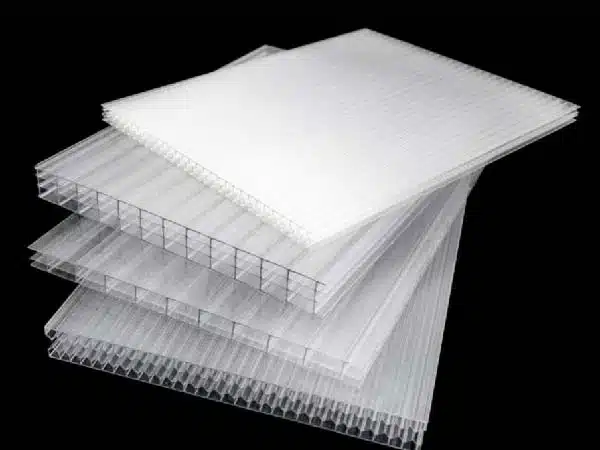In modern agriculture, greenhouse design is crucial in enhancing crop production and reducing energy consumption. Among the many types of greenhouses, the sawtooth greenhouse has gained popularity in tropical and subtropical climates due to its unique roof design and natural ventilation system.
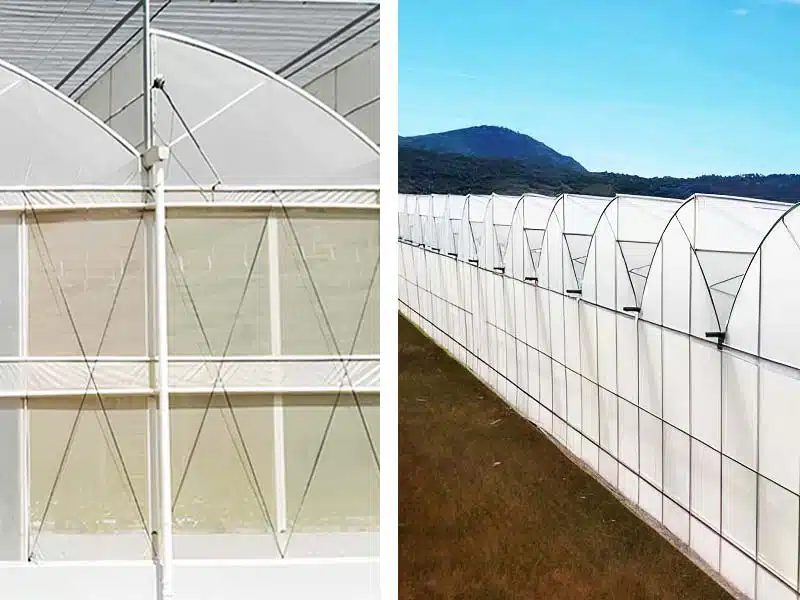
But what exactly is a sawtooth greenhouse, why is it considered one of the top options for commercial agriculture, and how does it look? In this article, we will explore the sawtooth greenhouse, how it works, its types, and its applications in modern farming.
What Is a Sawtooth Greenhouse?
A sawtooth greenhouse is a modern structure named for the saw-like design of its roof. This roof has several curved, sawtooth-shaped sections, with vertical windows at the highest points to enhance natural ventilation. Sawtooth greenhouses are commonly used in commercial agriculture, particularly for crops that require precise climate management, such as high-value fruits and vegetables.
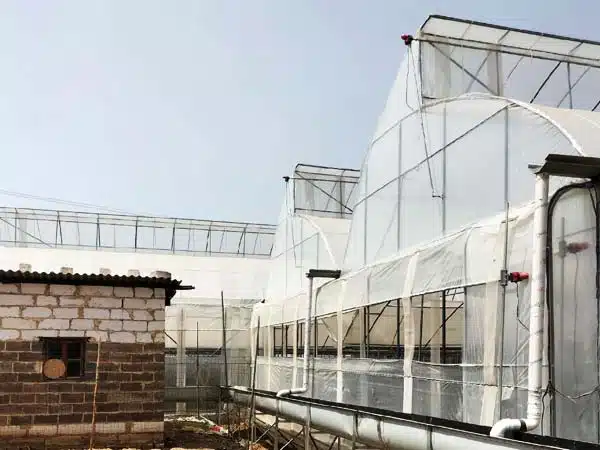
This design maximizes using natural resources like airflow and gravity to regulate the temperature and humidity inside the greenhouse, reducing the reliance on external energy sources like electricity. Compared to traditional greenhouses, sawtooth greenhouses provide better ventilation, temperature control, and structural stability, making them ideal for hot, humid regions and areas with frequent rain, especially in tropical and subtropical climates.
Read More About: INSONGREEN Sawtooth Greenhouse Specifications >>
How Does a Sawtooth Greenhouse Work?
The sawtooth greenhouse operates on the “chimney effect” principle and natural air convection. As the temperature inside the greenhouse rises, warm air naturally rises and exits through the vertical windows at the top, while cooler air enters from below, creating a natural airflow cycle. This process lowers the internal temperature without relying on mechanical ventilation, which is especially beneficial during hot seasons or in warmer regions.
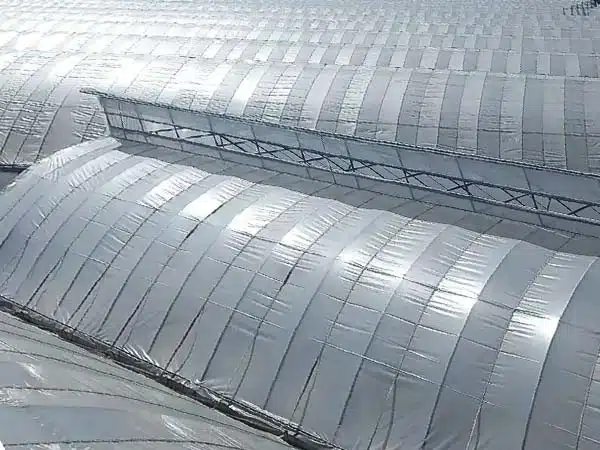
Key Design Features:
- Vertical Windows: The windows at the roof’s peak allow hot air to escape, ensuring continuous airflow. This design maintains effective ventilation even during rainy or snowy conditions.
- Roll-up Mechanism: The vertical windows are controlled by a roll-up mechanism that opens for ventilation and closes for insulation when needed.
- Energy Efficiency: The natural ventilation system reduces the need for mechanical ventilation, cutting energy costs, particularly in areas with limited electricity or high energy expenses. Additionally, the structure helps prevent excess humidity, reducing the risk of plant diseases.
Three Different Types of Sawtooth Greenhouses
Sawtooth greenhouses have evolved, with three main types emerging, each suited to different environmental conditions and crop requirements. The progression of these designs reflects improvements in ventilation, structural stability, and the ability to withstand weather conditions.
1. Triangular Sawtooth Greenhouse
The triangular sawtooth greenhouse represents the earliest and simplest design in the sawtooth family. Its straightforward triangular roof allows for efficient natural ventilation without requiring complex construction. The sharp triangular shape aids in effective airflow and provides excellent drainage, making it well-suited for regions with moderate rainfall. Additionally, since the triangular surfaces are flat without curvature, there are various material options for covering the greenhouse, such as glass, polycarbonate panels, or film.
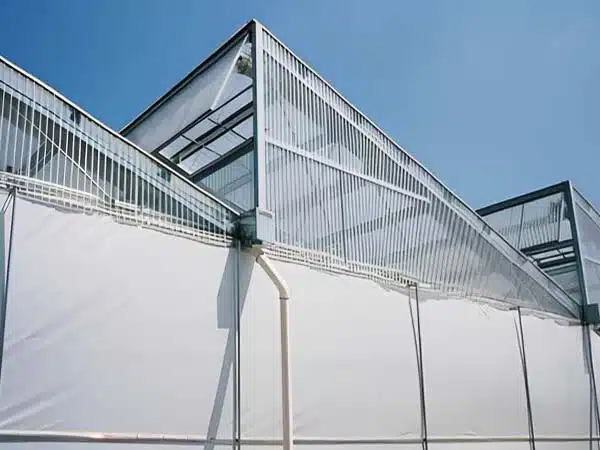
2. Single Half-Arch Sawtooth Greenhouse
The single half-arch sawtooth greenhouse advances the original triangular design, featuring an arched roof on one side and a straight roofline on the other. The arch helps to reduce the pressure from rain and snow on the roof, improving the structure’s durability. This type of greenhouse provides a more compact structure, which benefits regions with lighter wind conditions. It also balances cost-effectiveness with functionality, making it ideal for small- to medium-sized greenhouses.
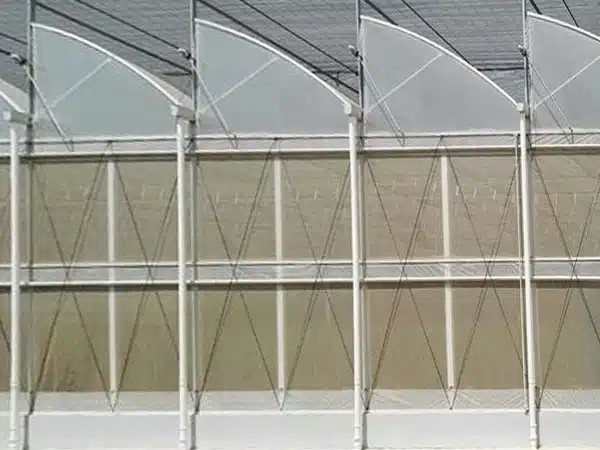
3. Double Half-Arch Sawtooth Greenhouse
The double half-arch sawtooth greenhouse builds on the single half-arch design, further improving the structure’s ability to handle wind and snow loads. This design features two arched sections of different lengths – one shorter, positioned near the skylight, and the other longer, near the gutter. This dual-arch design enhances ventilation and significantly reduces wind pressure on the roof, making it more resistant to extreme weather conditions. The double arch makes this greenhouse highly suitable for larger operations and areas prone to harsher climates.
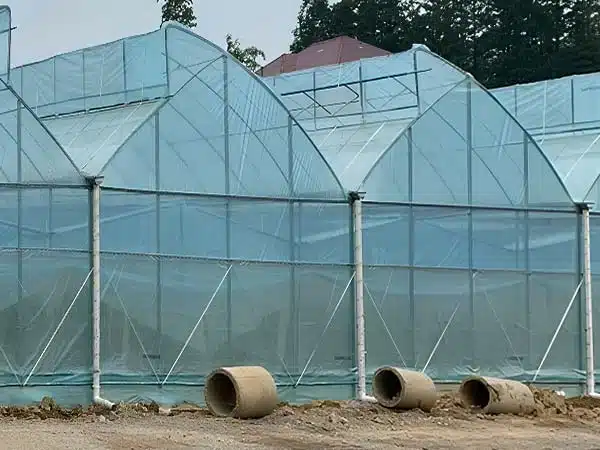
Sawtooth Greenhouses Applications
Sawtooth multi-span greenhouses are widely used in various agricultural scenarios due to their excellent natural ventilation and structural durability:
- Fruit and Vegetable Farming: Perfect for crops that require strict temperature and humidity control while minimizing energy consumption.
- Flower Cultivation: The precise control of ventilation and humidity makes these greenhouses ideal for flowers, which are sensitive to environmental conditions.
- High-Value Crops: Sawtooth greenhouses are ideal for growing high-value crops, such as strawberries and grapes, which require precise environmental management.
In regions with extreme weather conditions, such as heavy rainfall or frequent climate fluctuations, sawtooth greenhouses are often the preferred choice due to their superior wind and snow resistance.
Conclusion
Sawtooth greenhouses are typically designed in a multi-span structure, often covered with plastic film for added efficiency. This design, combined with various climate control systems and equipment, offers a highly effective solution for large-scale commercial agriculture. By providing natural ventilation and reducing energy consumption, while also ensuring structural stability across diverse climates, sawtooth greenhouses have become a versatile and reliable choice.
This greenhouse model has consistently proven beneficial for fruit, vegetable, and flower production across various agricultural applications. As energy costs continue to rise and precise climate control becomes increasingly important, the sawtooth greenhouse remains one of the top options for farmers worldwide.
Please contact us if you plan to invest in a large-scale sawtooth greenhouse. INSONGREEN, as a professional greenhouse designer and builder, can provide you with the most optimal solution for your agricultural needs.

